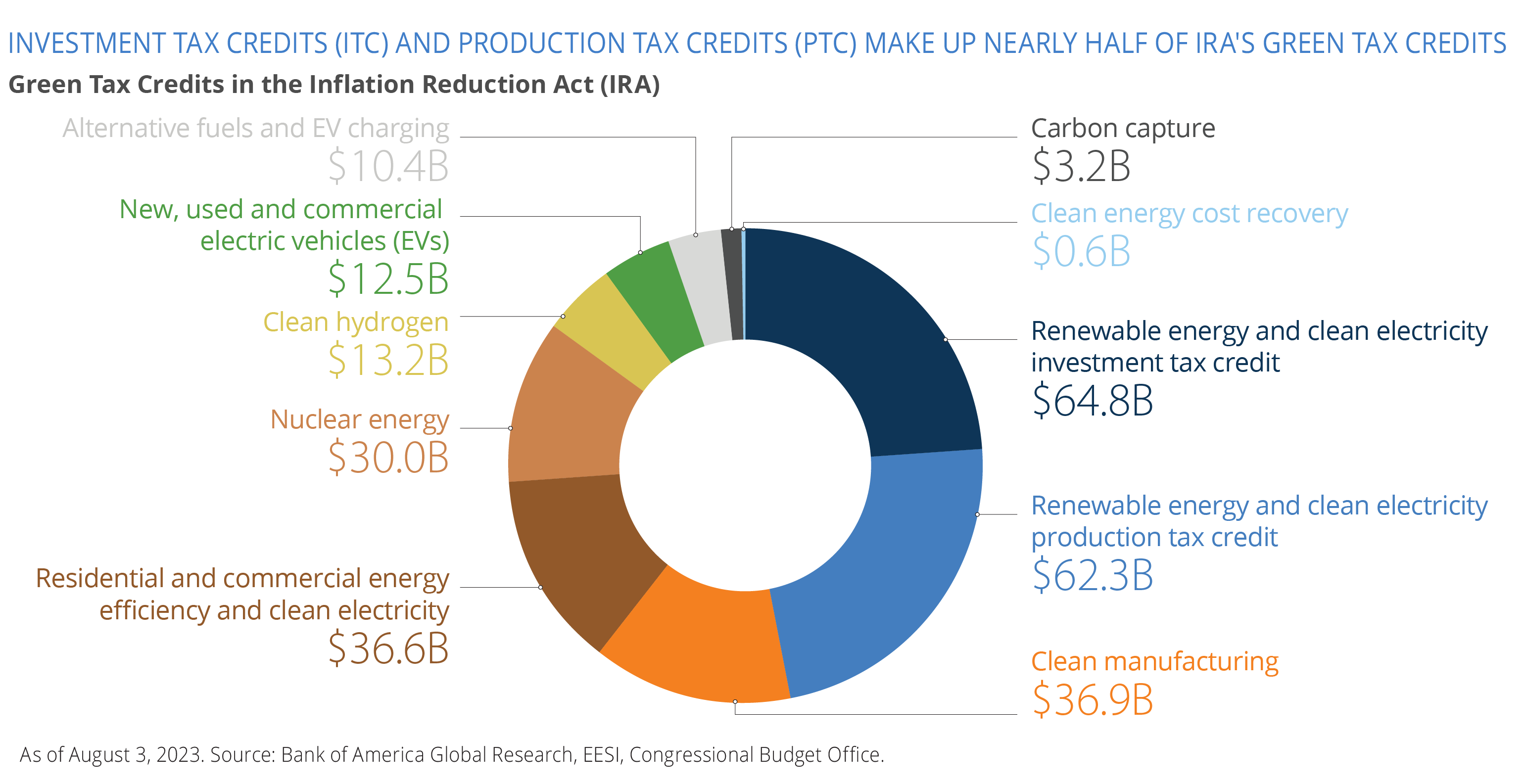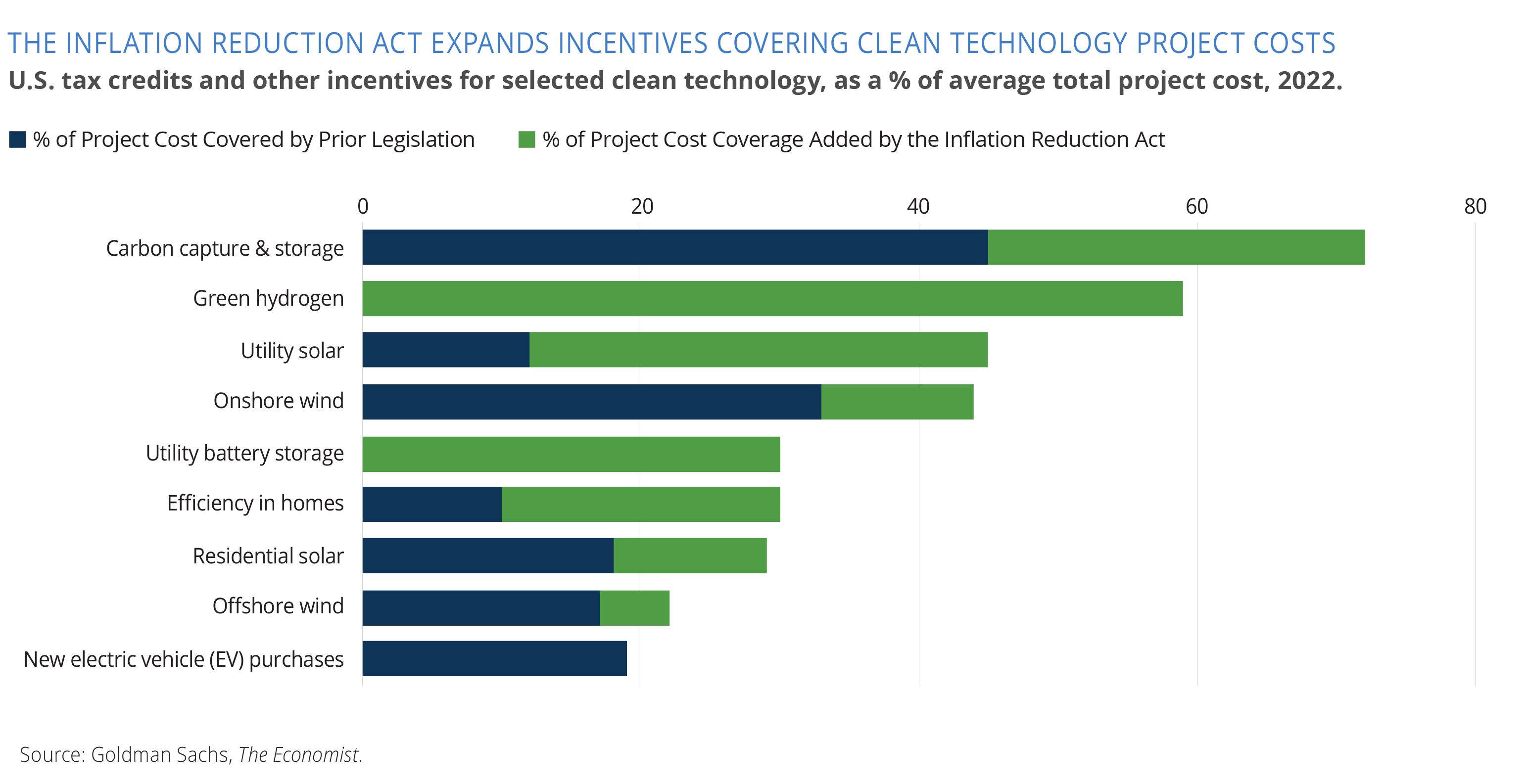Market
Memos from Howard Marks: Cockroaches in the Coal MineIt has been a year since President Biden signed the Inflation Reduction Act (IRA) into law, providing a good opportunity to check in on the landmark 2022 legislation’s widespread and meaningful implications for listed infrastructure. The IRA significantly expanded economic incentives for clean energy projects, driving a new wave of growth opportunities that a diversified approach to listed infrastructure can potentially capture.
The IRA has been a “steroid shot in the arm” to renewables development, with companies that have assets within the U.S. poised to benefit. We see tax incentive adjustments serving as a catalyst for increased manufacturing production and development of wind & solar projects in the U.S. For example, the IRA removes the requirement that investor-owned utilities realize the related investment tax credit over the life of their assets, not immediately. We believe this makes solar projects more competitive and economic for utilities to own.
In addition, many of the tax credit mechanisms in the legislation last for decades or more, unlike previous incentives that lasted for one or two years. This provides more visibility into future costs for offshore wind projects, which involve multiyear development periods.
The IRA also includes other incentives that are spurring investment in nuclear energy, clean hydrogen, stand-alone renewables battery storage, and carbon capture. As clean hydrogen becomes more profitable, many midstream assets could potentially be repurposed for this alternative energy source, helping to create investment opportunities for North American energy infrastructure companies. For instance, the midstream assets could be used to transport both conventional natural gas and, in some instances, hydrogen, which might be produced hundreds of miles away from its consumption centers.

We are also likely to see increased clean energy investment in Europe. The early days of the European Union’s proposed response to the IRA, the “Green Deal Industrial Plan,” offers incentives for European companies to keep manufacturing of clean energy local. We believe this will likely spur greater spending across Europe, including investment to expand industrial manufacturing capacity for renewable energy equipment, like wind turbines or solar panels. Renewable energy and clean hydrogen could gradually reduce Europe’s energy dependency on third-party suppliers.
Beyond the IRA, we also see other legislation on the horizon that could benefit listed infrastructure. We believe broader permitting reform legislation may be on the docket for the U.S. Congress later this year. Such legislation could make it easier for new projects to be built across state lines. Electricity transmission and distribution networks, interstate midstream pipelines and other projects related to the energy transition could be key beneficiaries.
